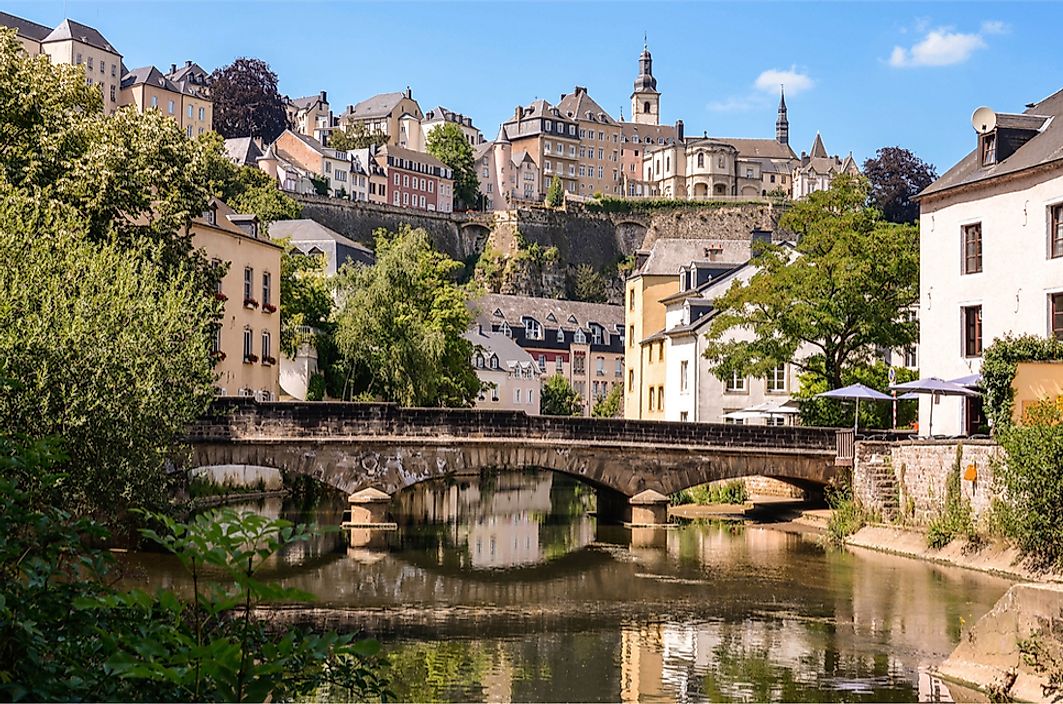How Did Luxembourg Get Its Name?

Where Is Luxembourg?
Luxembourg is a nation located in the northwestern region of Europe. The country covers a total area of 998.6 square miles, which makes it one of the smallest countries in Europe. Similarly, with a population of only 590,667, Luxembourg is also one of the least populated countries in the region. The country is landlocked, sharing borders with France, Germany, and Belgium. Its capital is as Luxembourg City, which also has the distinction of being one of the official capitals of the European Union.
The country has a long history that dates back to 963 AD, when ownership of the territory surrounding Luxembourg Castle (as it is known today) changed hands. Since then, Luxembourg has grown around this building and has managed to maintain a high level of autonomy. It is often recognized for its unique name, which has a history that dates back to the country's origin. This article examines how Luxembourg got its name.
How Did Luxembourg Get Its Name?
Siegfried I of Ardennes first acquired the territory surrounding the present-day city of Luxembourg in 963 AD by entering a trade agreement with the Abbey of Saint Maximin. After gaining ownership of the land, Siegfried I commissioned the construction of Lucilinburhuc, a historic castle known today as the Luxembourg Castle. This name, Lucilinburhuc, is translated into English as “Little Fortress.” Luxembourg City developed around the castle, with the first major addition being the consecration of several altars at the Church of the Redemption. Today, the church is still located in Luxembourg City and is known as St. Michael’s Church. As more people became drawn to the area, a market was established at a crossroads located near the church. These three establishments (the castle, the church, and the market) became the central point from which Luxembourg City grew. Since Lucilinburhuc castle was the oldest establishment in the region, its name was used to refer to the city. The anglicized version of Lucilinburhuc is Luxembourg, meaning that the country and its capital city were named after a 10th-century castle.
Growth of Luxembourg
As the family and descendants of Siegfried I grew, so too did their belongings and territory. This growth occurred by conquering neighboring landowners, making treaties with nearby settlements, and acquiring land through marriage. Nearly 100 years after the establishment of Lucilinburhuc Castle, one of the descendants of Siegfried (Conrad) became the Count of Luxembourg, and his descendants became counts and countesses. By the 1100s, the area surrounding the castle had grown to approximately 12 acres and was enclosed with fortifications and walls. In the early 14th century, one family member even became the Holy Roman Emperor. By the mid-14th century, Holy Roman Emperor Charles IV, who had previously been the king of several regions, promoted the distinction of Luxembourg from county to duchy, an area that is ruled by a duke or duchess. Beginning in the 15th century, the family of Siegfried I lost control of the duchy to the Austrian Habsburgs, the French, and the Spanish over a period of 400 years that followed. In 1815, Luxembourg became a grand duchy and in 1866, the territory that began as a small fortress became a completely independent nation.











